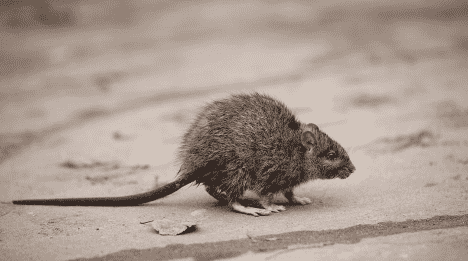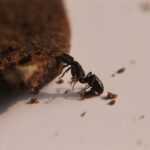Seattle Rat Population – almost sounds like a sports team, right?
Well this blog isn’t about sports, but let’s talk about Seattle rats. There are two common species of the Seattle rat – the Norway rat and the Roof rat. Seattle rats are everywhere. Nocturnal, they often go unnoticed, until they become a nuisance. Sound, smell, or sightings are common rat signs of infestation. They seek food, water and shelter. Seattle rats have so many options. A few examples: garbage, pet food, birdseed, vegetables, meat, spoiled food, nuts. If you look, you can see that there is a smorgasbord of food options for Seattle rats, (more than we have for dining out). Many buildings, apartment’s, restaurants and dark alleys host overflowing garbage cans that attract them. Think Templeton, in Charlotte’s web! The more people, the more opportunity for Seattle rats.
Seattle rats are small enough to fit through quarter sized holes, (I know you grabbed a quarter and just thought “really, no way”). Seattle rats are not native, they were imported. That’s right, they came in on cargo ships. The city’s rat population is primarily composed of two species: the Norway rat and the Roof rat, which have instilled fear in humans throughout history due to their association with disease and filth.
Roof rats enjoy a habitat with trees, branches, and vines. They have big ears and eyes, long tails, (longer then the head and tail combined). The tail helps in balancing. Pointed noses and have slender bodies. They have even been seen running along wires, coming into the home. Keeping tree branches cut back and away from the home will help prevent the Seattle rat from accessing the roofline.
Norway rats are common on the ground, alleys and sewers. Tails are shorter than head and body combined. Heavy set, small ears and eyes, and blunt nose. Make sure to seal up any entry points to help prevent them. Vent screens, burrowing, and keeping shrubs, bushes cut back also. Leave no gap left unchecked. They have been known to come into buildings using the sewer lines, yes up the toilet as they can swim, underwater. Seattle rats swim!
Rat’s gestation period is about 21 days – and she can become pregnant one day after giving birth! Averaging 6-13 pups. Okay I hear the gears clicking. Let’s think. So, a female rat is pregnant for 21 days and can get pregnant THAT FAST. Potentially 16 litters PER YEAR – okay breath! 16 litters at 6 to 13 pups = 96 to 208 more Seattle rats. Oh man! The rat population has grown exponentially, with the city ranking #11 in Orkin’s list of Rattiest Cities in 2021. King County has implemented various rat control measures and waste management systems to combat the growing rat population.
Seems to me that rats are resilient. They have lasted this long. We can continue to help knock down the population. Making sure that there are no access points. Inspect your home once a year. Seal any entry points, correct any vent screens that have come loose. Keep Ivy cut back, trim trees and bushes. Keep garbage off the ground and away from the home. Crawl space access doors should close completely and allow no gaps. And call PURCOR to set up a rodent control program.
Understanding Seattle’s Rat Population
Seattle’s rat population is a complex issue that requires a deep understanding of the city’s history, geography, and human behavior. The city’s rat population is primarily composed of two species: the Norway rat and the Roof rat. These rodents have been present in Seattle for over a century, with the first recorded rat infestation dating back to the Great Seattle Fire of 1889. Since then, the rat population has grown exponentially, with the city ranking #11 in Orkin’s list of Rattiest Cities in 2021.
Causes of the Growing Rat Problem
Several factors contribute to the growing rat problem in Seattle. One major factor is the city’s rapid development and modernization efforts, which create new homes and food sources for rats. Environmental changes, such as tunnel digging and building replacement, displace existing creatures and force them to seek new habitats. Additionally, the city’s proximity to waterways and its mild climate make it an ideal breeding ground for rats. The exponential population growth of rats, with one breeding pair able to produce up to 15,000 descendants in one year, further exacerbates the problem.
Effective Rat Control Measures
Effective rat control measures require a multi-faceted approach that involves both short-term and long-term solutions. In the short term, sealing entry points and inspecting homes once a year can help prevent rat infestations. Keeping garbage off the ground and away from homes, trimming trees and bushes, and keeping ivy cut back can also help prevent rats from accessing homes. Regular rodent control programs, such as those offered by PURCOR, can help manage rat populations. In the long term, addressing the root causes of the rat problem, such as development and environmental changes, is crucial to achieving a rat-free Seattle.
Protecting Your Home from Rats
Protecting your home from rats requires a proactive approach that involves both prevention and control measures. Sealing all entry points, including holes and gaps around pipes, vents, and doors, is essential to preventing rat infestations. Keeping your home clean and free of clutter, storing food in sealed containers, and removing pet food and birdseed can also help deter rats. Installing rat-proof screens on vents and chimneys and using rat-deterrent plants, such as mint and lemongrass, can also help keep rats away.
Long-Term Solutions for a Rat-Free Seattle
Achieving a rat-free Seattle requires a long-term commitment to addressing the root causes of the rat problem. This involves implementing sustainable development practices that prioritize environmental sustainability and community engagement. Increasing public awareness and education about rat control and prevention measures can also help empower residents to take action. Collaborating with local businesses, community groups, and government agencies to develop and implement effective rat control strategies is crucial to achieving a rat-free Seattle. By working together, we can create a safer, healthier, and more sustainable community for all.
"*" indicates required fields
"*" indicates required fields




